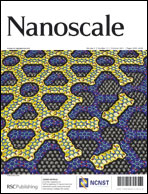We perform a spin polarized density-functional theory (DFT) study of the electronic and magnetic properties of pristine and chemically doped germanene nanoribbons (GeNRs) with different widths. It is found that the Ge atom at the ribbon edge always prefers to be substituted by an impurity atom. Our study reveals that a single N or B atom substitution induces a semiconducting–metal transition in armchair oriented germanene nanoribbons (AGeNRs) as evidenced by the appearance of a half-filled band with less dispersion; however, N and B co-doping at the ribbon edges only modifies their band gaps, due to the accomplishment of an effective charge compensation. A single N or B atom substitution usually turns antiferromagnetic (AFM) semiconducting zigzag germanene nanoribbons (ZGeNRs) into ferromagnetic (FM) semiconductors. This AFM–FM transition is attributed mainly to the perturbation of π and π* states localized at the doped edge. Double atom substitutions (regardless of N–N, B–B or N–B configurations) at the edges of ZGeNRs removes the spin-polarization at both edges and transforms them into non-magnetic (NM) semiconductors. Moreover, it is interesting that some single atom doped ZGeNRs can exhibit a FM half-metallic character with 100% spin-polarization at the Fermi level. Our results suggest that doped AGeNRs and ZGeNRs have potential applications in Ge-based nanoelectronics, such as field effect transistors (FETs), negative differential resistance (NDR) and spin filter (SF) devices.

You have access to this article
 Please wait while we load your content...
Something went wrong. Try again?
Please wait while we load your content...
Something went wrong. Try again?


 Please wait while we load your content...
Please wait while we load your content...